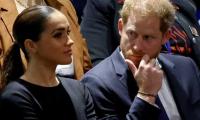In one of history’s most shocking electoral upsets, Republican presidential nominee, Donald Trump, pulled off a decisive victory against his Democratic rival, Hillary Clinton. It was an outcome that defied practically all leading pundits and polls, putting into jeopardy the credibility of established media outlets and experts.
As post-election market fluctuation and nationwide anti-Trump protests demonstrate, the United States is a deeply polarised nation haunted by political uncertainty, which will certainly have a cascading effect on the rest of the world.
In contrast, China is likely to be seen as a relative rock of stability and bastion of mature leadership by a growing number of countries.
Neither Trump nor his core team of advisers exhibit similar credentials or inspire much confidence. Trump, a billionaire businessman, has had no relevant diplomatic engagement with Asia. Much of his exposure to the region is based on pure business deals.
His ‘America first’ philosophy, coupled with his ‘Make America Great Again’ campaign slogan, suggests his preference for a more transactional, introverted foreign policy, which puts America’s short-term interests ahead of the international liberal order.
This is precisely why he has repeatedly questioned Washington’s long-standing military commitments in both Asia and Europe, which have benefited from decades of US security umbrella.
He has threatened to withdraw American military support from vulnerable allies, ranging from the Baltic States which confront a Russian threat to South Korea which faces a volatile North Korea, unless they provide strategic ‘tribute’ and fulfil their respective ‘obligations’.
No wonder then, shortly after his election victory, Seoul convened an emergency National Security Council meeting to assess risks of a potential American disengagement from the region. Strategic anxiety also permeates halls of power in Tokyo, Manila, Canberra and other traditional allied nations.
Not too dissimilar from the George W Bush administration, Trump has expressed more preference for unilateral assertion of American military muscle, particularly in the South China Sea, rather than harnessing regional institutions, international law and multilateral diplomacy.
He seems to be more concerned with striking grand bargains with major powers, particularly Russia, than engaging with smaller nations and mobilising allies for preservation of public international goods.
Trump’s anti-trade rhetoric, which has transformed the (white) working class into his core constituency, also doesn’t bode well for the US’ economic engagement with the region.
He has opposed both existing (North America Free Trade Agreement) and proposed (Transpacific Partnership Agreement) regional commercial arrangements, which are crucial to the US’ strategic influence and economic wellbeing.
His plans to impose heavy tariffs on trading partners in Asia, introduce ‘extreme vetting’ on immigrants, and scrap the TPP agreement will heavily undermine the US’ leadership in the region.
He will have to dramatically distance his actual policy from his campaign rhetoric, sign up credible foreign policy advisers, constantly reiterate Washington’s commitment to regional alliances and the broader strategic order, and propose a positive-sum economic initiative, which will deepen, not reduce, trade and investment linkages in the Asia-Pacific theatre.
Otherwise, Trump’s presidency could very well mark the end of ‘American exceptionalism’ or any credible claim to such.
This article has been excerpted from: ‘How Trump’s victory was received in Asia’.
Courtesy: Aljazeera.com
A woman walks past a building of the International Monetary Fund. — AFP/FileThe annual and spring meetings of the...
Late Benazir Bhutto's daughter Asifa Bhutto Zardari addresses the Christian community in Bihar Colony on January 23,...
Representational image. — PexelsWater is an important scarce natural resource that is required for several everyday...
Pakistani employees of online marketplace company Kaymu at work in Karachi. — AFP/FileThe true spirit of development...
India uses Afghanistan as a backstage area to carry out terrorist attacks against Pakistan
Another report by the Pakistan Institute of Peace Studies states that 78 per cent of attacks have been carried out by...







